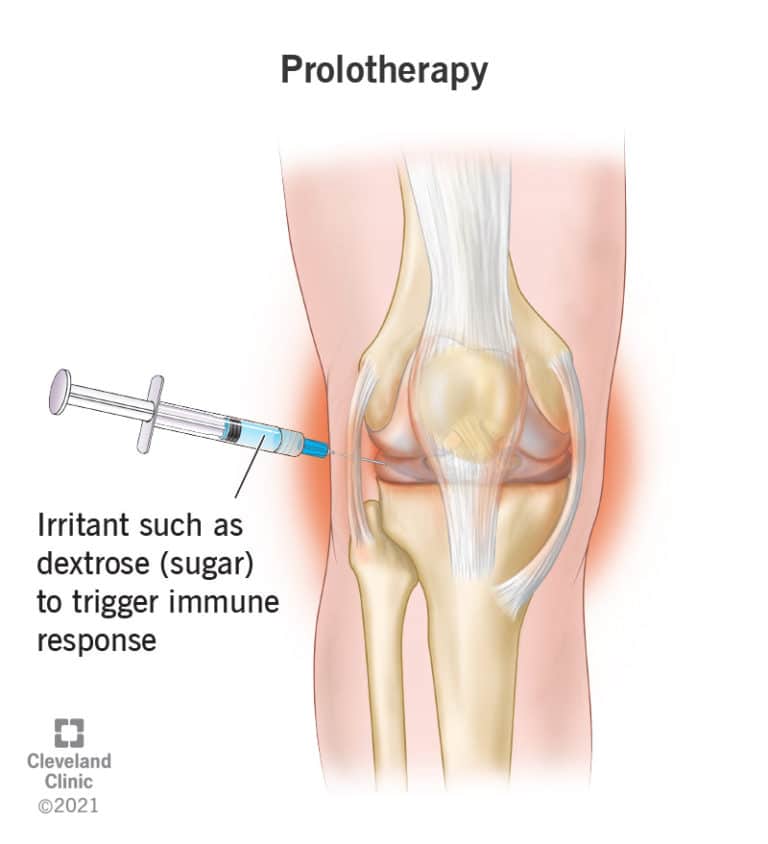Prolotherapy, also known as proliferation therapy, involves injecting a solution to trigger the production of new cells in order to promote healing in areas experiencing pain. While ligaments are typically the primary targets for these injections, muscles and tendons can also benefit from this treatment.
Ligaments play a crucial role in our joints by connecting bone to bone. Because they contain numerous nerve endings, when ligaments get overstretched, they can result in pain. Over time, ligaments may become loose due to our regular posture and daily movements, in addition to being susceptible to injuries from accidents or other traumas.

Before undergoing prolotherapy, an evaluation of your candidacy is necessary. It is crucial for a qualified clinician to conduct this assessment, with a focus on exploring conservative treatment options initially. The more comprehensive the information provided during your visit, the more informed decision can be made regarding your treatment plan.
The injections consist of a mixture of a local anaesthetic and Dextrose. The Dextrose solution is a strong enough concentration to irritate the injected tissue. This stimulates mild inflammation in the area, which is the first part of the healing process.
The typical risks associated with skin puncture, such as infection and bleeding, are extremely rare due to the use of a small-diameter needle in our procedures.
While it is technically feasible to accidentally access the spinal canal, this risk is minimal as injections are no longer targeted at the center of the spine. In the rare event of spinal canal entry, patients may experience a severe headache lasting 2 to 4 days while upright, which can be relieved by lying flat.
Another potential risk is puncturing a lung, which is uncommon and mainly associated with injections in the upper back region.
A small fraction of individuals may have allergies to local anesthetics, so it is important to inform your practitioner if you suspect such a reaction.
An even smaller percentage of people may have allergic reactions to the sugar content present in medical Dextrose. Some individuals have expressed concerns about feeling excessively tight post-injections, but rest assured that this outcome is not possible.
The injections may cause discomfort initially, but the local anesthetic swiftly alleviates any pain. However, if you’re receiving injections across multiple levels or find the pain intolerable, alternative options can be discussed.
Most patients can drive themselves to and from the treatment and typically resume work afterward. For out-of-town patients, having a driver for the initial treatment allows for comfortable position changes during the journey home.
Following the procedure, most patients may experience stiffness for a day or two. Regular position changes, light activity, stretching, and applying heat are usually sufficient for relief. If stiffness persists, muscle relaxants like Robaxacet or pain relief such as Tylenol can be considered. Avoid using anti-inflammatory painkillers (e.g., Advil, Ibuprofen, ASA, Celebrex, etc.).
Most men require three to six treatments. Women usually require six to nine treatments. Treatments are done weekly, biweekly, or monthly. You can expect to see improvement from the injections one to two months after the last injection.
It is very important to see your physiotherapist two to seven days after prolotherapy. This is to check joint mobility and settle any muscle spasm. Physiotherapy is also important one to two months after the last injection when the ligaments are tightening. At that time you will get longer lasting relief from the IMS (intramuscular stimulation) and be ready to start increasing your stretching and strengthening program.